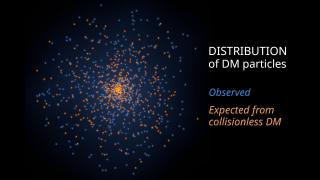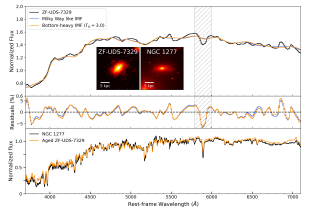ESA's Herschel Space Observatory was launched on 14 May 2009. After a short commissioning and performance verification period, the science demonstration observations started in September 2009. Herschel is now carrying out routine science observations.
The three instruments (SPIRE, PACS and HIFI) are working extremely well. The IAC is part of the SPIRE and PACS instrument consortia and has contributed flying hardware and software.
The first results of the many Herschel Key Projects were presented at the ESLAB 2010 symposium in ESTEC (May 2010) and have been published in July 2010 in a special issue of Astronomy and Astrophysics (Vol. 518):
http://www.aanda.org/index.php?option=com_toc&url=/articles/aa/abs/2010/10/contents/contents.html
The Herschel Multi-tiered Extragalactic Survey (HerMES, hermes.sussex.ac.uk/) is an astronomical project to study the evolution of galaxies in the distant Universe. HerMES is the largest project on ESA's Herschel Space Observatory. The project is carried out by a large team, made up primarily of people who built the SPIRE instrument on Herschel.
The first results of the HerMES survey were published in the special issue of Astronomy and Astrophysics. Some of these papers are in collaboration with the PACS Evolutionary Probe (PEP) extragalactic survey (http://www.mpe.mpg.de/ir/Research/PEP/).
The Herschel SPIRE instrument and its performance is described in:
The Herschel-SPIRE instrument and its in-flight performance
M. J. Griffin et al., Astronomy and Astrophysics, Volume 518, L3
Papers of the HerMES team in the special issue of Astronomy and Astrophysics on Herschel:
HerMES: The SPIRE confusion limit.
H. T. Nguyen et al., Astronomy and Astrophysics, Volume 518, L5
The HerMES SPIRE submillimeter local luminosity function.
M. Vaccari et al., Astronomy and Astrophysics, Volume 518, L20
HerMES: SPIRE galaxy number counts at 250, 350, and 500 ?m.
S. J. Oliver et al., Astronomy and Astrophysics, Volume 518, L21
HerMES: Halo occupation number and bias properties of dusty galaxiesfrom angular clustering measurements.
A. Cooray et al., Astronomy and Astrophysics, Volume 518, L22
First results from HerMES on the evolution of the submillimetre luminosity function.
S. A. Eales et al., Astronomy and Astrophysics, Volume 518, L23
Herschel unveils a puzzling uniformity of distant dusty galaxies.
D. Elbaz et al., Astronomy and Astrophysics, Volume 518, L29
The far-infrared/radio correlation as probed by Herschel.
R. J. Ivison et al., Astronomy and Astrophysics, Volume 518, L31
HerMES: The submillimeter spectral energy distributions ofHerschel/SPIRE-detected galaxies.
B. Schulz et al., Astronomy and Astrophysics, Volume 518, L32
HerMES: Far infrared properties of known AGN in the HerMES fields.
E. Hatziminaoglou et al., Astronomy and Astrophysics, Volume 518, L33
Herschel and SCUBA-2 imaging and spectroscopy of a bright, lensedsubmillimetre galaxy at z = 2.3
R. J. Ivison et al., Astronomy and Astrophysics, Volume 518, L35
More information on the HerMES project at: hermes.sussex.ac.uk/



